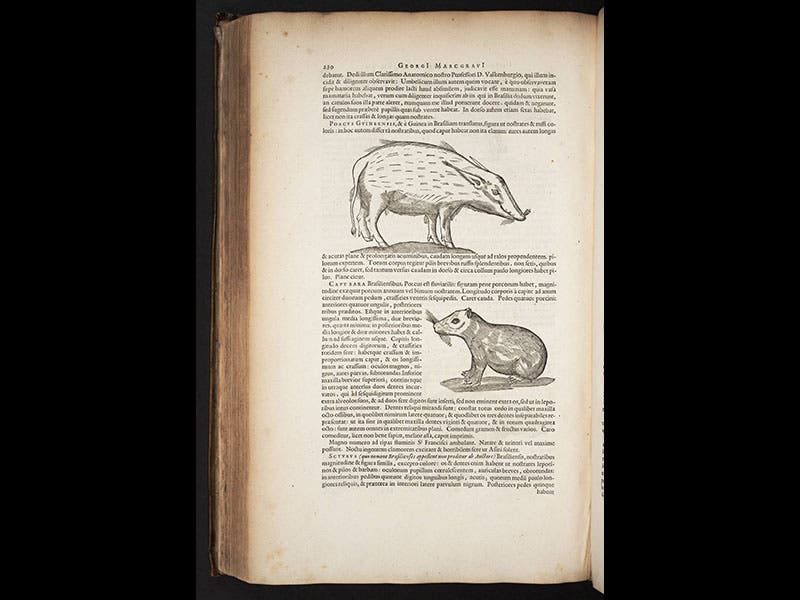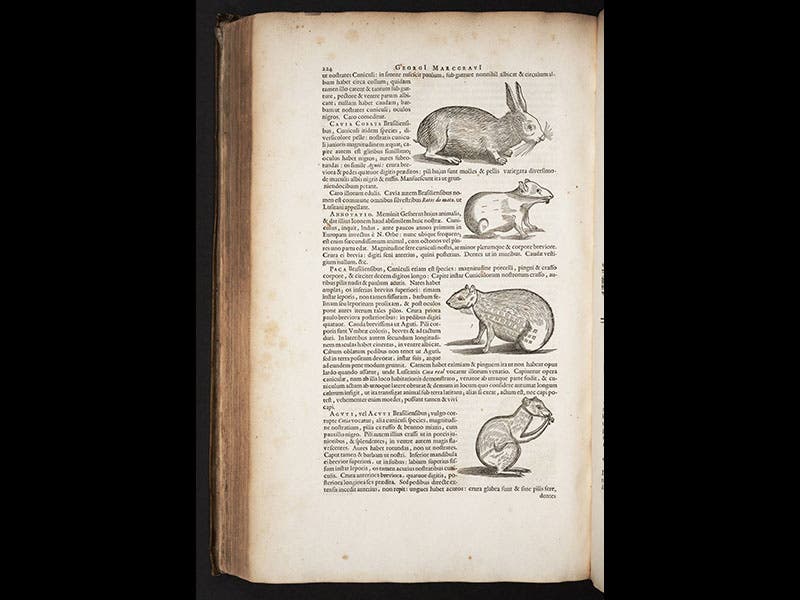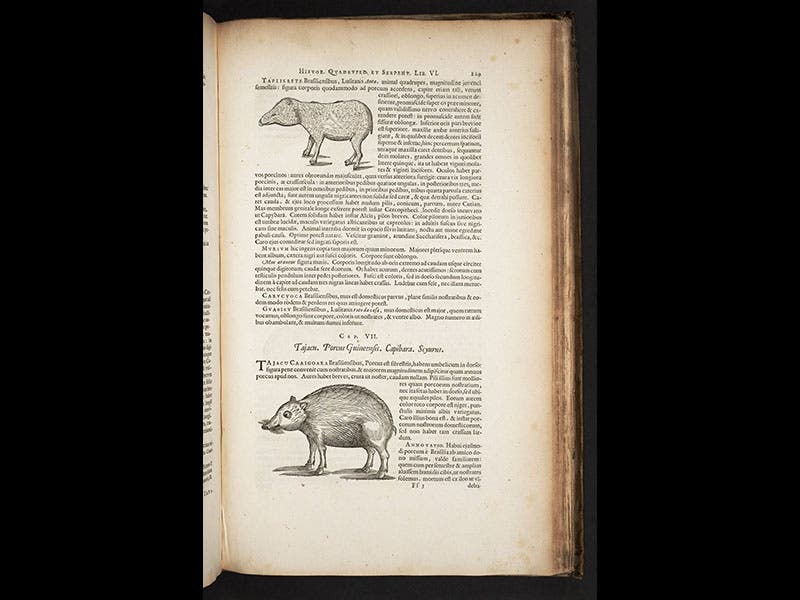Scientist of the Day - Georg Markgraf
Georg Markgraf, a German astronomer and naturalist, was born Sep. 20, 1610. In 1638, he departed for Brazil to enter the service of Count Johan Maurits of Nassau, who had just taken command of the Dutch sugar colony at Recife. One of Markgraf's responsibilities was to collect information on the animals of Brazil. This he did, writing short descriptions and commissioning illustrations from life of a host of animals unknown to Europe, such as the howler monkey, the capybara, and the great anteater. Markgraf was then sent to Angola, where he died in 1644, but his zoological manuscripts survived and were edited by Johannes de Laet for inclusion in a folio publication of 1648, Historia naturalis Brasilae, by Willem Piso. The illustrations above are all taken from this book, which we have in our Collections. You will notice that Markgraf's descriptions are relatively brief and straightforward: "The Brazilian coati is a fox the size of a cat; it has short claws and hands like a monkey," etc.
The Natural History of Brazil was published about the time Joannes Jonston was compiling his Natural History. We featured Jonston as our Scientist of the Day just last week, where we mentioned that Jonston created a new kind of natural history by limiting himself to brief descriptions and leaving out all the adagial and emblematic baggage that afflicted earlier natural histories, such as that of Ulisse Aldrovandi. Since Jonston read the Natural History of Brazil thoroughly, and included nearly all of Markgraf's images in his own encyclopedia, it is very possible that Jonston got the idea for his streamlined descriptions from Markgraf as well. In which case, Markgraf deserves more credit than he is commonly afforded as a founder of modern descriptive zoology.
The images above depict, in order: a great anteater (detail); a howler monkey and coati; a peccary and capybara; a cavy, paca, and agouti; a tapir and a tajacu; and the engraved title page (with a sloth climbing a tree). We exhibited the Natural History of Brazil in our 2009 exhibition, The Grandeur of Life.
Dr. William B. Ashworth, Jr., Consultant for the History of Science, Linda Hall Library and Associate Professor, Department of History, University of Missouri-Kansas City. Comments or corrections are welcome; please direct to ashworthw@umkc.edu.












